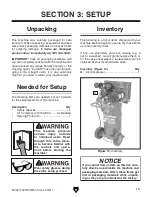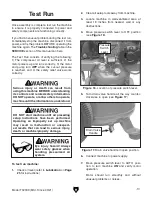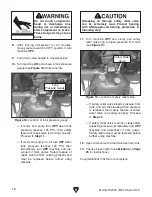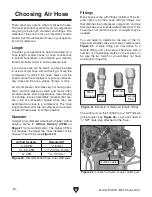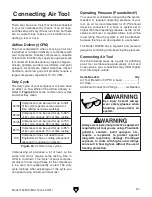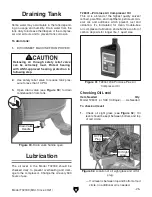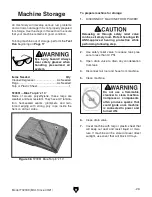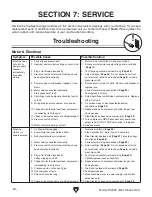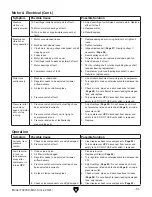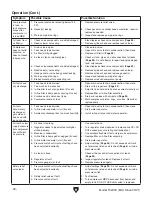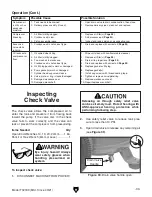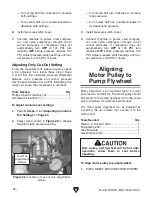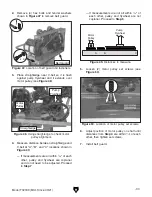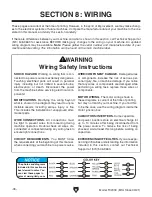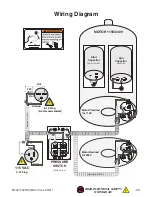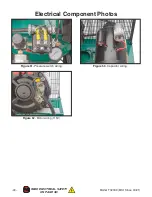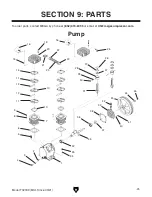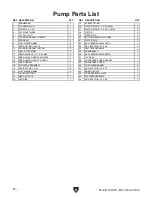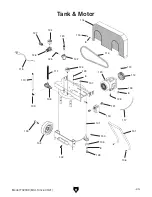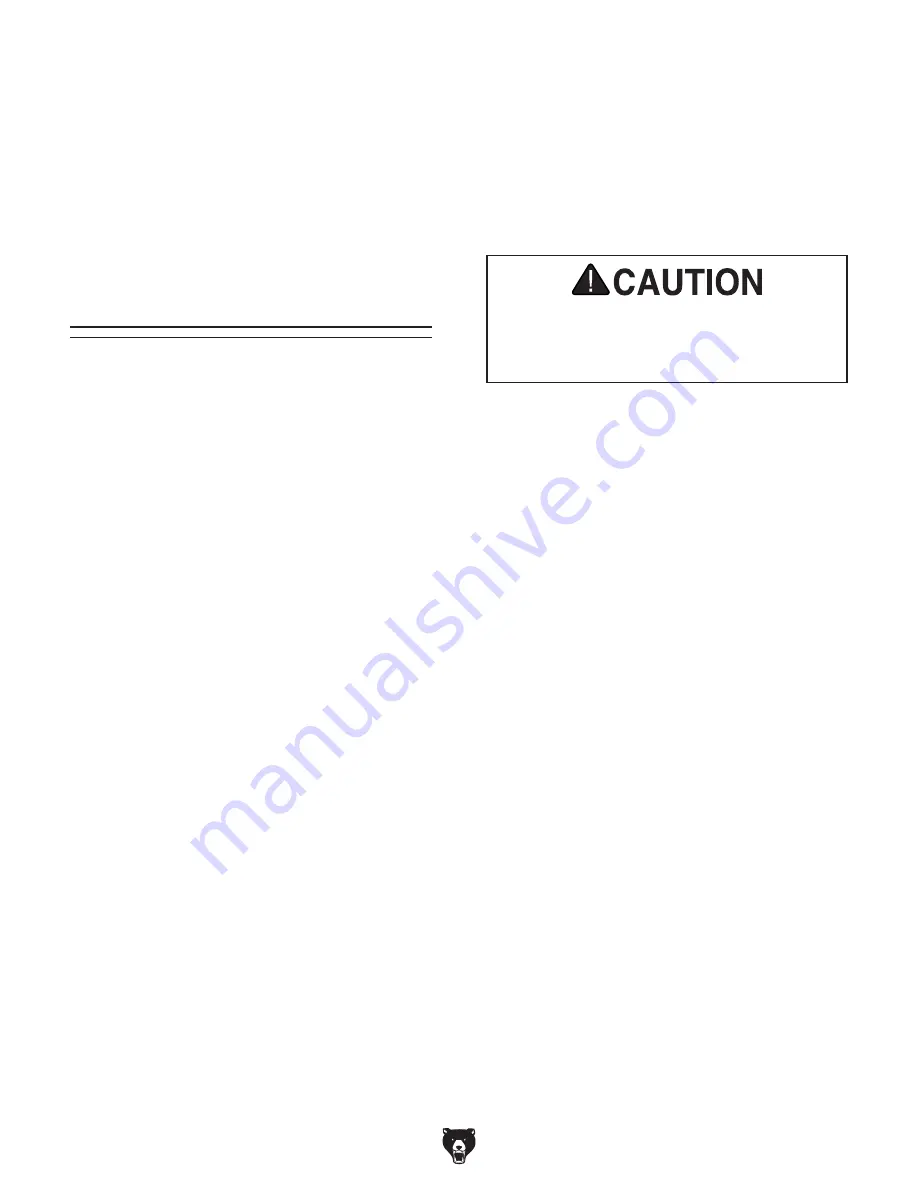
-28-
Model T32339 (Mfd. Since 03/21)
Air leaks will cause low air output and increase
the time the compressor must run.
Checking for Leaks
Checking for Leaks
1. Disconnect tool and hose from compressor.
2. Turn ON compressor and allow tank to fill
until cut-out pressure is reached (125 PSI).
3. DISCONNECT MACHINE FROM POWER!
4. Listen for sound of air to find possible leak.
— If you do not hear air escaping, and pres-
sure in tank does not change, there is no
leak.
— If you do hear air escaping, or pressure
in tank drops even with safety relief valve
and drain valve closed, proceed to
Step 5.
5. Spray suspected air leak with soap and water
solution and look for air bubbles.
— If bubbles do not form, repeat at different
location.
— If bubbles do form, proceed to
Fixing
Leaks.
Fixing Leaks
2. Use safety relief valve to reduce tank pres-
sure to less than 10 PSI.
3. Open drain valve to relieve any remaining air.
4. Remove fitting or valve that is leaking.
5. Clean threads, apply thread sealing tape or
pipe dope to threads, then re-install part.
Note: If a fitting or valve continues to leak
after preceding steps, replace part.
Item Needed
Qty
Wire Brush ......................................................... 1
Thread Sealing Tape or Pipe Dope ... As Needed
Releasing air through safety relief valve
can be extremely loud. Protect hearing with
ANSI-approved hearing protection while
performing following step.
To fix leaks:
1. DISCONNECT MACHINE FROM POWER!
5. Have another person push motor away from
pump so there is approximately
1
⁄
4
" deflection,
then tighten hex nuts from
Step 4.
6. Perform Steps 3
–4 of Aligning Motor Pulley
to Pump Flywheel on Page 36 to check pul-
ley alignment.
7. Install belt guard.
Summary of Contents for T32339
Page 48: ......


